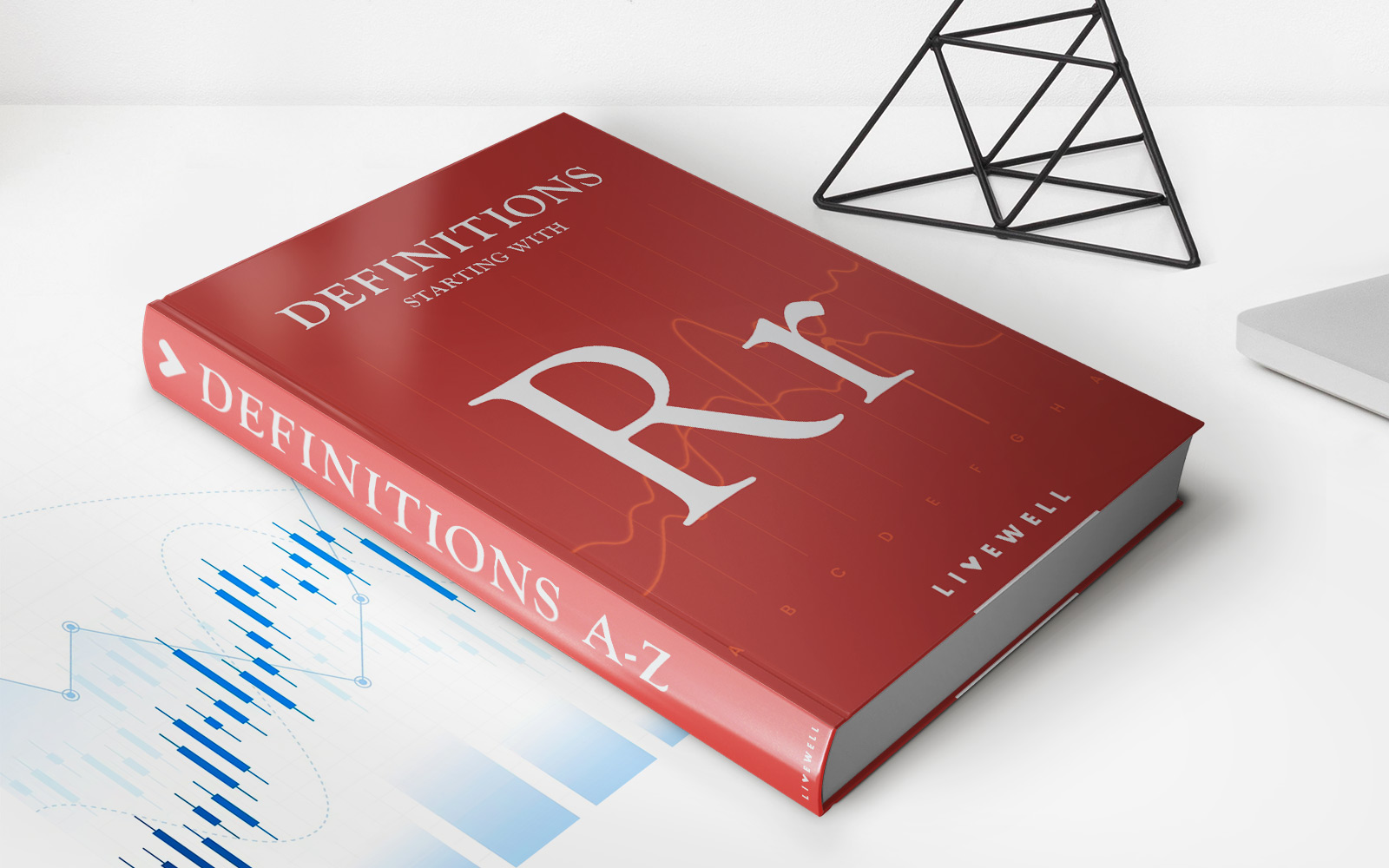

Finance
How To Calculate Working Capital Needs
Modified: February 21, 2024
Looking to understand how finance impacts working capital needs? Our guide on calculating working capital requirements will provide you with the insights you need.
(Many of the links in this article redirect to a specific reviewed product. Your purchase of these products through affiliate links helps to generate commission for LiveWell, at no extra cost. Learn more)
Table of Contents
Introduction
Welcome to our guide on how to calculate working capital needs. Whether you are a business owner, finance professional, or simply interested in gaining a deeper understanding of finance fundamentals, this article will provide you with valuable insights into the concept of working capital and how to determine the optimal amount needed for your business operations.
Working capital is a critical financial metric that demonstrates a company’s liquidity and ability to meet its short-term obligations. It represents the funds available to cover day-to-day operational expenses, such as managing inventory, paying suppliers, and meeting payroll.
Managing working capital effectively is essential to ensure the smooth functioning of business operations and maintain financial stability. Insufficient working capital can lead to liquidity problems, hindering growth opportunities and jeopardizing the company’s financial health. Conversely, excessive working capital can indicate poor capital management and inefficient allocation of resources.
Understanding your company’s working capital needs is crucial for making informed financial decisions and optimizing cash flow. By accurately assessing and monitoring your working capital requirements, you can optimize inventory levels, negotiate better terms with suppliers, and allocate resources more effectively.
In this article, we will explore the components of working capital, discuss different methods to calculate working capital needs, and highlight the importance of accurately assessing and managing working capital for long-term business success.
Understanding Working Capital
Working capital is a key financial metric that measures a company’s short-term liquidity and its ability to meet its immediate financial obligations. It represents the difference between a company’s current assets and its current liabilities.
Current assets are the resources that the company expects to convert into cash or consume within one year. These typically include cash, accounts receivable, inventory, and short-term investments. On the other hand, current liabilities are the financial obligations that the company is required to settle within one year, such as accounts payable, short-term loans, and accrued expenses.
The working capital of a business provides insights into its operational efficiency and financial health. A positive working capital means that a company has enough liquid assets to cover its short-term liabilities, representing a financially healthy position. It indicates that the company can meet its day-to-day expenses, maintain smooth operations, and navigate unexpected financial challenges.
Conversely, a negative working capital indicates that a company’s short-term liabilities exceed its current assets, posing a potential liquidity risk. This situation may arise due to factors such as cash flow issues, delayed receivables, or excessive debt burdens. While a negative working capital is not always a cause for alarm, it requires careful monitoring and proactive management to avoid potential financial distress.
Working capital needs may vary across different industries and business models. Companies with high inventory turnover, such as retailers, may require larger working capital to support their operational needs. Conversely, service-based businesses with low inventory and quick receivable turnover may have lower working capital needs.
Understanding your company’s working capital requirements is crucial for effective financial management. By assessing and monitoring your working capital, you can identify potential liquidity gaps, optimize cash flow, and make informed decisions to maintain a healthy financial position. In the following sections, we will explore the different components of working capital and how to calculate your specific working capital needs.
Components of Working Capital
Working capital is comprised of various components that contribute to a company’s overall liquidity and financial stability. These components include current assets and current liabilities.
Current Assets: Current assets are the resources that a company expects to convert into cash or consume within one year. These assets are essential for day-to-day operations and include the following:
- Cash: The most liquid asset, including both physical cash and cash equivalents.
- Accounts Receivable: The amounts owed to the company by its customers for goods or services sold on credit.
- Inventory: The goods that a company holds for sale or consumption in the normal course of operations.
- Short-term Investments: Investments that mature within one year, such as marketable securities or certificates of deposit.
- Prepaid Expenses: Expenses paid in advance, such as insurance premiums or rent.
Current Liabilities: Current liabilities, on the other hand, are the financial obligations that a company is required to settle within one year. These liabilities represent the claims of external parties against the company’s assets and typically include:
- Accounts Payable: The amounts owed by the company to its suppliers for goods or services purchased on credit.
- Short-term Loans: Borrowed funds that are due for repayment within one year.
- Accrued Expenses: Expenses that have been incurred but not yet paid, such as salaries, utilities, or taxes.
- Unearned Revenue: Revenue received in advance for goods or services not yet delivered.
By analyzing the components of working capital, businesses can gain insights into their liquidity position and identify areas for improvement. For example, excessive levels of inventory or extended accounts receivable periods may tie up valuable working capital, while aggressive payment terms with suppliers may help free up cash for other purposes.
Understanding these components and their impact on working capital is crucial for effective financial management. In the next section, we will explore different methods to calculate your company’s working capital needs.
Current Assets
Current assets are a vital component of working capital as they represent the resources that a company expects to convert into cash or consume within one year. These assets are crucial for day-to-day operations and play a significant role in determining a company’s liquidity and financial health.
Here are some common types of current assets:
- Cash: Cash is the most liquid current asset and includes physical cash on hand and funds held in bank accounts. It enables a company to meet immediate financial obligations and handle unexpected expenses.
- Accounts Receivable: Accounts receivable represents the amounts owed to a company by its customers for goods or services provided on credit. It represents a claim on future cash inflows and is typically recorded as an asset on the balance sheet.
- Inventory: Inventory consists of the goods that a company holds for sale or for use in its production process. It includes raw materials, work-in-progress, and finished goods. Proper management of inventory is essential to balance supply and demand, minimize carrying costs, and optimize working capital.
- Short-term Investments: Short-term investments are financial instruments that mature within one year and provide a return on investment. Examples include marketable securities, treasury bills, and certificates of deposit. These investments offer a balance between liquidity and earning potential.
- Prepaid Expenses: Prepaid expenses are payments made in advance for goods or services that will be received in the future. Common examples include prepaid rent, insurance premiums, or annual subscriptions. These expenses are initially recorded as assets and are gradually expensed over time.
It is important to effectively manage and control current assets to maintain adequate liquidity and optimize working capital. This involves monitoring cash flow, ensuring timely collection of accounts receivable, optimizing inventory levels, and making strategic decisions regarding short-term investments and prepaid expenses.
By analyzing the composition and value of current assets, businesses can determine their ability to meet short-term obligations, evaluate their operational efficiency, and make informed decisions to enhance their financial performance. In the next section, we will explore current liabilities, which complete the picture of working capital assessment.
Current Liabilities
Current liabilities are an important component of working capital as they represent the financial obligations that a company is required to settle within one year. These liabilities play a crucial role in determining a company’s liquidity and financial health, as they represent claims by external parties against the company’s assets.
Here are some common types of current liabilities:
- Accounts Payable: Accounts payable are the amounts owed by a company to its suppliers for goods or services purchased on credit. These liabilities arise from the normal course of business transactions and are expected to be settled within a short period, usually 30 to 90 days.
- Short-term Loans: Short-term loans are financial obligations that a company has borrowed and are due for repayment within one year. These loans may include lines of credit, bank overdrafts, or short-term commercial loans. Managing short-term debt is crucial to avoid excessive interest costs and maintain financial stability.
- Accrued Expenses: Accrued expenses are expenses that a company has incurred but has not yet paid. Examples include salaries and wages, utilities, rent, and taxes. These expenses are recorded as liabilities as they represent amounts owed and are typically settled in the near term.
- Unearned Revenue: Unearned revenue represents payments received in advance from customers for goods or services that have not yet been delivered. This liability is recorded until the revenue is earned, at which point it is recognized as income. Unearned revenue obligations are fulfilled when the corresponding goods or services are provided.
Managing current liabilities effectively is crucial for maintaining a healthy working capital position. It involves maintaining good relationships with suppliers, strategically managing debt obligations, and ensuring timely payment of accrued expenses and obligations to customers.
By analyzing the composition and magnitude of current liabilities, businesses can evaluate their liquidity position, assess their ability to meet short-term obligations, and make informed decisions to optimize working capital. In the next section, we will explore different methods to calculate working capital needs based on these components.
Calculating Working Capital Needs
Calculating your company’s working capital needs is essential for effective financial management. It helps determine the optimal amount of working capital required to support day-to-day operations, manage cash flow, and meet short-term obligations. There are several methods you can use to calculate your working capital needs, including the current ratio method, the operating cycle method, and the cash flow method.
Method 1: Current Ratio: The current ratio is a simple and widely used method to determine working capital needs. It is calculated by dividing current assets by current liabilities. The formula for the current ratio is:
Current Ratio = Current Assets / Current Liabilities
A current ratio greater than 1 indicates that the company has sufficient current assets to cover its current liabilities and suggests a healthy working capital position. However, it is important to interpret the current ratio in the context of the industry and specific business dynamics.
Method 2: Operating Cycle Method: The operating cycle method takes into account the time it takes for a company to convert its resources into cash. It considers the time from the purchase of inventory to the collection of cash from the sale of goods or services. The formula for the operating cycle method is:
Operating Cycle = Inventory Days + Accounts Receivable Days – Accounts Payable Days
By calculating the operating cycle, you can estimate the average number of days it takes for your company to complete a full operating cycle. This information can help determine the working capital needs in terms of the number of days of working capital required to support operations.
Method 3: Cash Flow Method: The cash flow method focuses on the analysis of historical cash flow patterns to determine working capital needs. It involves assessing the timing and magnitude of cash inflows and outflows related to operating activities. By analyzing cash flow statements, you can identify trends and fluctuations in cash flows and make projections for future working capital requirements.
It is important to note that calculating working capital needs is not a one-time exercise. It requires regular monitoring and reassessment to adapt to changes in the business environment, such as seasonality, growth, or economic conditions.
By using these methods and regularly evaluating your working capital needs, you can optimize your cash flow, ensure adequate liquidity, and make informed financial decisions for the long-term success of your business.
Method 1: Current Ratio
The current ratio is a commonly used financial metric to assess a company’s liquidity and calculate its working capital needs. It provides a simple way to determine if a business has enough current assets to cover its current liabilities. The current ratio is calculated by dividing current assets by current liabilities.
The formula for the current ratio is:
Current Ratio = Current Assets / Current Liabilities
A current ratio greater than 1 indicates that a company has more current assets than current liabilities, suggesting that it has sufficient working capital to cover its short-term obligations. This implies a healthier liquidity position and a lower risk of facing cash flow issues.
Conversely, a current ratio less than 1 indicates that a company may not have enough current assets to meet its current liabilities. This may indicate a potential liquidity risk and the need for additional working capital or a closer examination of the company’s financial position.
While a current ratio above 1 generally signifies a healthier working capital position, it is important to interpret this ratio within the context of the industry and specific business dynamics. Different industries have varying working capital requirements, and a high current ratio may not always be ideal. Factors such as inventory turnover, accounts receivable collection period, and the nature of the business should be taken into consideration.
When using the current ratio method to calculate working capital needs, it is important to regularly monitor and reassess the ratio over time. Changes in operating conditions, business expansion, or economic factors can impact a company’s working capital requirements. Therefore, it is crucial to adjust the calculation as needed to accurately determine the working capital needed for smooth operations and financial stability.
By analyzing and interpreting the current ratio, businesses can gain insight into their working capital needs and make informed decisions regarding cash flow management, inventory control, credit policies, and financing options. It serves as a fundamental tool for assessing liquidity and ensuring that adequate working capital is available to support the day-to-day operations of the business.
Method 2: Operating Cycle Method
The operating cycle method is a more detailed approach to calculating working capital needs. It takes into account the time it takes for a company to convert its resources into cash and considers the duration of the entire operating cycle. This method provides insights into the working capital requirements based on the company’s specific operations and cash flow dynamics.
The operating cycle is calculated by summing up three key components: inventory days, accounts receivable days, and accounts payable days. The formula for the operating cycle method is:
Operating Cycle = Inventory Days + Accounts Receivable Days – Accounts Payable Days
The calculation involves the following steps:
- Inventory Days: Determine the average number of days it takes for inventory to be sold or used. This can be calculated by dividing the value of average inventory by the cost of goods sold (COGS) per day.
- Accounts Receivable Days: Determine the average number of days it takes for accounts receivable to be collected. This can be calculated by dividing the value of average accounts receivable by the average daily credit sales.
- Accounts Payable Days: Determine the average number of days it takes to pay accounts payable. This can be calculated by dividing the value of average accounts payable by the average daily credit purchases.
By adding up the inventory days, accounts receivable days, and accounts payable days, you can determine the average length of the operating cycle in terms of days. This information provides a more accurate estimate of the working capital needs specific to the company’s operational cycle.
Understanding the operating cycle helps businesses identify areas where working capital may be tied up or excessive. For example, a longer accounts receivable collection period may indicate the need to improve credit management or collection practices. Similarly, optimizing inventory turnover and negotiating favorable credit terms with suppliers can help reduce the working capital needs associated with inventory and accounts payable.
The operating cycle method provides insights into the timing of cash flows and the specific working capital needs of a company. By carefully monitoring and managing the components of the operating cycle, businesses can optimize cash flow, minimize working capital requirements, and improve overall financial performance.
It is important to periodically reassess the operating cycle as business conditions change. Factors such as industry dynamics, product lifecycles, and customer behavior can impact the length of the operating cycle and, consequently, the working capital needs of a company.
By utilizing the operating cycle method, businesses can gain a deeper understanding of their working capital requirements and make informed decisions to enhance cash flow management, optimize inventory levels, and improve overall operational efficiency.
Method 3: Cash Flow Method
The cash flow method is another approach to calculating working capital needs, focusing on analyzing historical cash flow patterns to determine the company’s specific requirements. This method involves assessing the timing and magnitude of cash inflows and outflows related to the company’s operating activities.
By reviewing the cash flow statement and analyzing the cash flows from operating activities, businesses can gain valuable insights into their working capital needs. The cash flow statement provides information about the actual cash received and paid out by the company, offering a more accurate representation of the company’s financial position compared to other financial statements.
The cash flow method involves the following steps:
- Identify Cash Inflows: Review the cash flow statement and identify the sources of cash inflows from operating activities. This includes cash received from sales, collections from accounts receivable, and other sources of cash generated by the core business operations.
- Identify Cash Outflows: Identify the cash outflows from operating activities, such as cash payments to suppliers, salaries and wages, operating expenses, and other cash expenditures directly related to the day-to-day operations.
- Analyze Cash Flow Patterns: Analyze the cash flow patterns to identify trends, fluctuations, and the timing of cash inflows and outflows. This analysis provides insights into the working capital needs at different points in time and helps anticipate periods of increased or decreased working capital requirements.
- Project Future Cash Flows: Use the historical cash flow patterns to project future cash flows and estimate the working capital needs going forward. This projection involves considering factors such as seasonality, anticipated changes in sales volumes or collection periods, and planned operational initiatives.
The cash flow method provides a more dynamic and forward-looking perspective on working capital needs. It enables businesses to assess the sufficiency of cash flow to support day-to-day operations, meet short-term obligations, and make necessary adjustments to optimize working capital.
Regular monitoring and updating of cash flow projections are essential as business conditions change. Factors such as economic fluctuations, shifts in customer preferences, or industry dynamics can impact cash flow patterns and, consequently, the working capital needs of the company.
By utilizing the cash flow method, businesses can gain a comprehensive understanding of their working capital requirements, allowing them to make informed financial decisions, manage cash flow effectively, and allocate resources efficiently.
Importance of Calculating Working Capital Needs
Calculating and managing working capital needs is crucial for the financial stability and growth of a company. It provides valuable insights into the company’s liquidity, operational efficiency, and financial health. Here are some key reasons why calculating working capital needs is important:
1. Cash Flow Management: Assessing working capital needs helps businesses maintain healthy cash flow levels. By accurately determining the amount of cash required to cover short-term obligations, companies can ensure that they have sufficient liquidity to meet operational expenses, pay suppliers on time, and take advantage of growth opportunities.
2. Liquidity Management: Working capital needs analyses enable businesses to understand and manage their liquidity position effectively. By keeping the right amount of working capital on hand, companies can avoid potential cash flow problems, reduce the risk of insolvency, and remain financially stable.
3. Operating Efficiency: Calculating working capital needs helps identify areas where operational efficiency can be improved. By optimizing inventory levels, managing accounts receivable and payable efficiently, and reducing the cash conversion cycle, companies can streamline their operations and enhance profitability.
4. Financing Decisions: Accurately determining working capital needs is vital for making informed financing decisions. By understanding the amount of working capital required, businesses can evaluate different financing options and decide whether to use short-term debt, equity financing, or other funding sources to meet their working capital needs.
5. Vendor and Supplier Relationships: By assessing working capital needs, businesses can strengthen vendor and supplier relationships. Having a clear understanding of the cash flow cycle can enable companies to negotiate favorable terms with suppliers, such as extended payment terms or early payment discounts, which can improve cash flow management and working capital efficiency.
6. Growth and Expansion: Calculating working capital needs is particularly important during periods of growth and expansion. As businesses expand, their working capital requirements typically increase. By accurately estimating working capital needs, companies can ensure they have the resources to support growth initiatives, enter new markets, and capitalize on expansion opportunities.
7. Early Warning Signals: Monitoring working capital needs can serve as an early warning signal of potential financial distress. A significant decrease in working capital or negative working capital can indicate underlying issues, such as cash flow problems, excessive debt, or ineffective management of operational resources. Identifying these warning signs early allows businesses to take corrective actions and mitigate risks.
Overall, calculating working capital needs provides businesses with a holistic view of their financial position and operational requirements. By understanding and managing these needs effectively, companies can maintain financial stability, optimize cash flow, seize growth opportunities, and enhance their long-term success.
Conclusion
Calculating working capital needs is a critical aspect of financial management for businesses of all sizes and industries. It provides essential insights into the company’s liquidity, operational efficiency, and financial health. By accurately assessing and managing working capital, businesses can optimize cash flow, meet short-term obligations, and position themselves for long-term success.
Understanding the components of working capital, such as current assets and current liabilities, is the foundation for calculating working capital needs. By analyzing these components, businesses can identify areas where working capital may be tied up or excessive, enabling them to make informed decisions to optimize cash flow and working capital efficiency.
There are different methods to calculate working capital needs, including the current ratio method, operating cycle method, and cash flow method. Each method provides a unique perspective on working capital requirements and helps businesses tailor their financial strategies accordingly. It is important to regularly monitor and reassess working capital needs to adapt to changing business conditions, industry dynamics, and growth opportunities.
The importance of calculating working capital needs cannot be overstated. It facilitates effective cash flow management, enhances liquidity, improves operational efficiency, supports financing decisions, strengthens vendor relationships, enables growth and expansion, and serves as an early warning system for potential financial distress.
In conclusion, understanding and calculating working capital needs are essential for businesses to maintain financial stability, optimize operational performance, and position themselves for long-term growth. By effectively managing working capital, companies can navigate uncertainties, seize opportunities, and build a solid foundation for sustainable success.














